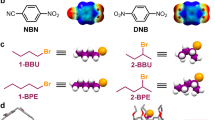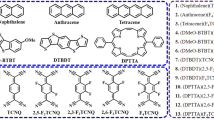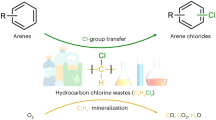Abstract
IF equal amounts of trinitrobenzene and a polycyclic aromatic hydrocarbon are dissolved in chloroform and the solution is dried off on to filter paper, a colour often appears due to the formation of a charge-transfer complex. The new absorption bears no relation to that of either of the components separately, and may be almost anywhere in the spectrum depending on the hydrocarbon. It is generally believed that negative charge is transferred from the hydrocarbon, acting as donor, to the trinitrobenzene, acting as acceptor. Other kinds of donor and acceptor are known1, and a theory of such complexes, base on molecular orbitals, has been given by Mulliken2.
This is a preview of subscription content, access via your institution
Access options
Subscribe to this journal
Receive 51 print issues and online access
$199.00 per year
only $3.90 per issue
Buy this article
- Purchase on SpringerLink
- Instant access to full article PDF
Prices may be subject to local taxes which are calculated during checkout
Similar content being viewed by others
References
Orgel, L. E., Quart. Rev. Chem. Soc., 8, 422 (1954).
Mulliken, E. K., J. Phys. Chem., 56, 801 (1952).
Szent-Gyorgyi, A., and McLaughin, J., Proc. U.S. Nat. Acad. Sci., 47, 1397 (1961).
Lovelock, J. E., Nature, 189, 729 (1961).
Szent-Gyorgyi, A., Bioenergetics, 74 (Academic Press, 1957).
Author information
Authors and Affiliations
Rights and permissions
About this article
Cite this article
NASH, T., ALLISON, A. Hydrogen Bonding and Charge-Transfer Complexes. Nature 195, 994 (1962). https://doi.org/10.1038/195994a0
Issue date:
DOI: https://doi.org/10.1038/195994a0



